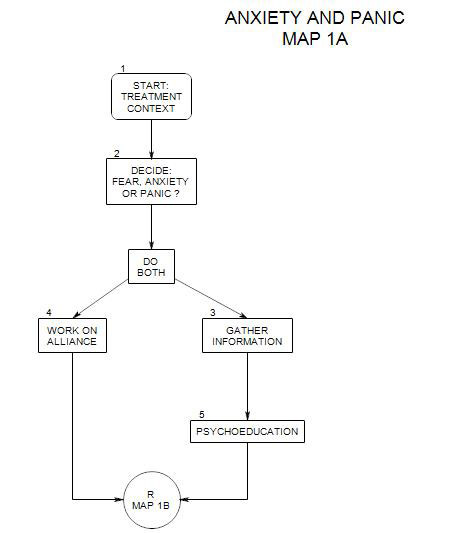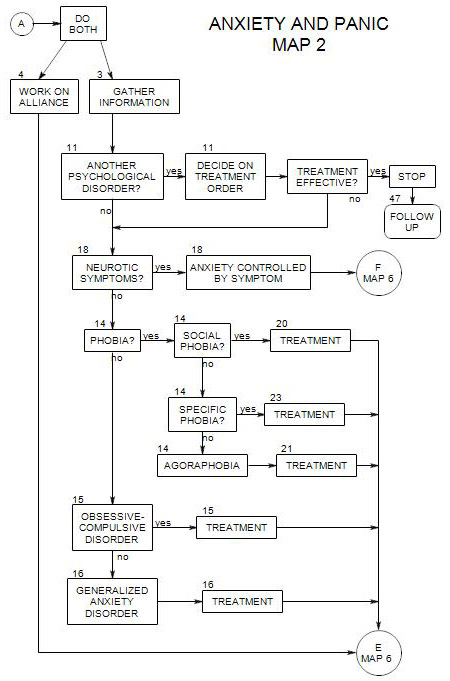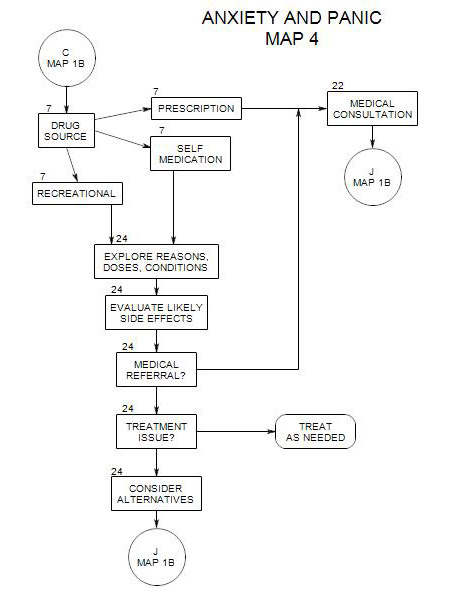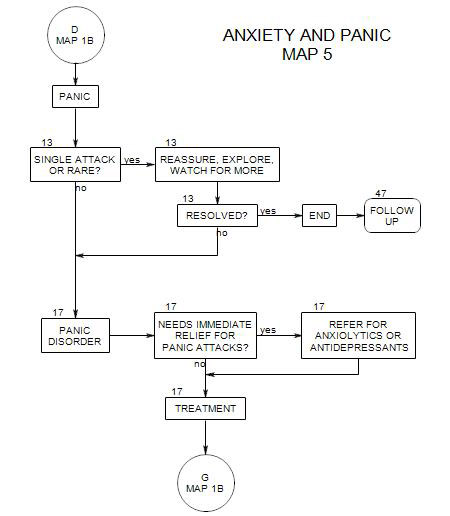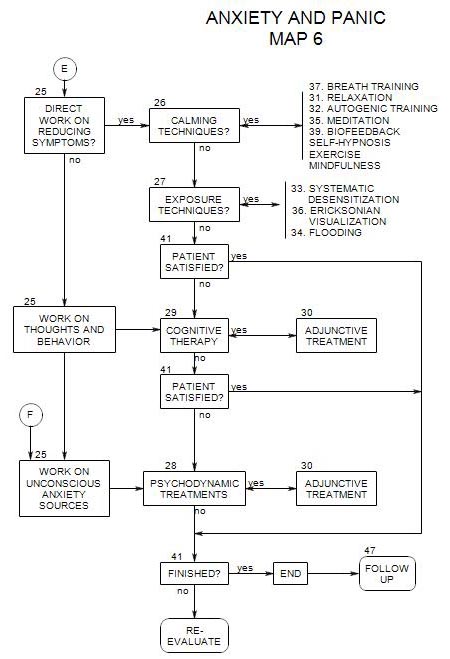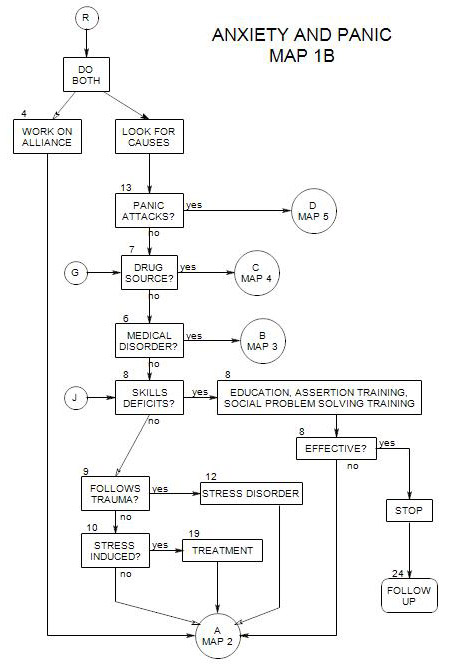
SECTIONS: 4 | 6 | 7 | 8 | 9 | 10 | 12 | 13 | 19 | 24
- Follows Section 8 on Map 1B
Here we consider people who were apparently functioning normally until faced with an exceptionally stressful circumstance or event, and who subsequently became anxious, with other associated symptoms. It seems reasonable to believe that the anxiety was precipitated by the stressful event or circumstance.
The stressors can range from serious [loss of job, marital separation] to life-threatening [automobile accident, terrorist attack, etc.]
For reactions to less stressful situations or to a combination of stresses, see Section 10.
9a. Typical Symptoms
Symptoms can include-
- re-experiencing the traumatic event, through nightmares, flashbacks, or re-living it in fantasy. May be accompanied by symptoms of panic, including shaking, perspiring, dyspnea, etc.
- paranoia.
- hostility in interpersonal relationships.
- survivor guilt.
- distress at anything which reminds the person of the event.
- avoiding places or events reminiscent of the trauma.
- denial or numbing of affect.
- increased arousal, in the form of disturbed sleep, difficulty concentrating, irritability, watchfulness [especially for cues of danger] and increased startle reaction.
- having sought medical prescriptions or self-medicating for the above symptoms.
9b. Traumatic Events
The event that precipitates a stress reaction often has qualities that help identify it, even if the person at first doesn’t recognize the connection. The person may have experienced the event as either a participant or a witness. Some possible elements include-
- surprise.
- the patient’s lack of preparation for it.
- the patient’s failure to act.
- a mistake on the patient’s part.
- awareness of contributing actively to precipitating the event and having angry, competitive or otherwise ignoble motives.
- death or serious injury of others.
- residual mutilation of patient or other severe physical symptoms.
Examples might include-
- robbery.
- rape or other physical assault.
- earthquake.
- auto accident.
- death of a loved one.
- explosion.
- major accident.
9c. Traumatic Situations
These involve a temporary or permanent change of life, goals, circumstances that includes a component of fear or horror and alter the person’s perception of self and the world. The person is unable to return to a previous sense of security.
Examples might include-
- being in jail or prison.
- being kidnapped.
- wartime experiences.
9d. Diagnostic Subcategories
Various labels are used for these reactions, including Acute Stress Disorder, Post-Traumatic Stress Disorder [PTSD], Stress Disorder and Acute Stress Reaction.
The DSM distinguishes Acute Stress Disorder from PTSD primarily on how long symptoms persist. In the first month after the traumatic event, they recommend a diagnosis of Acute Stress Disorder [308.3]; when symptoms last longer than that, they recommend calling it PTSD [309.81].
9e. Treatment: See Section 12.
References:
American Psychiatric Association: DSM-IV, 2005
